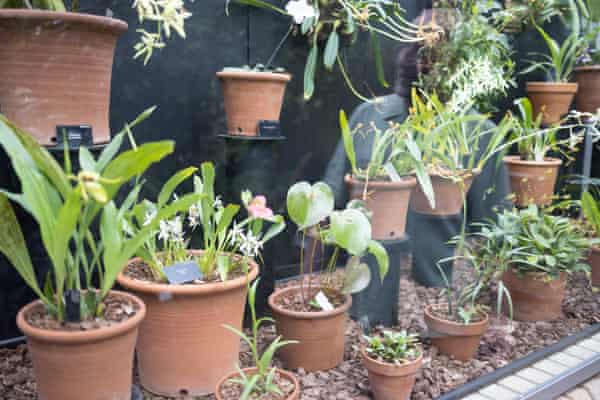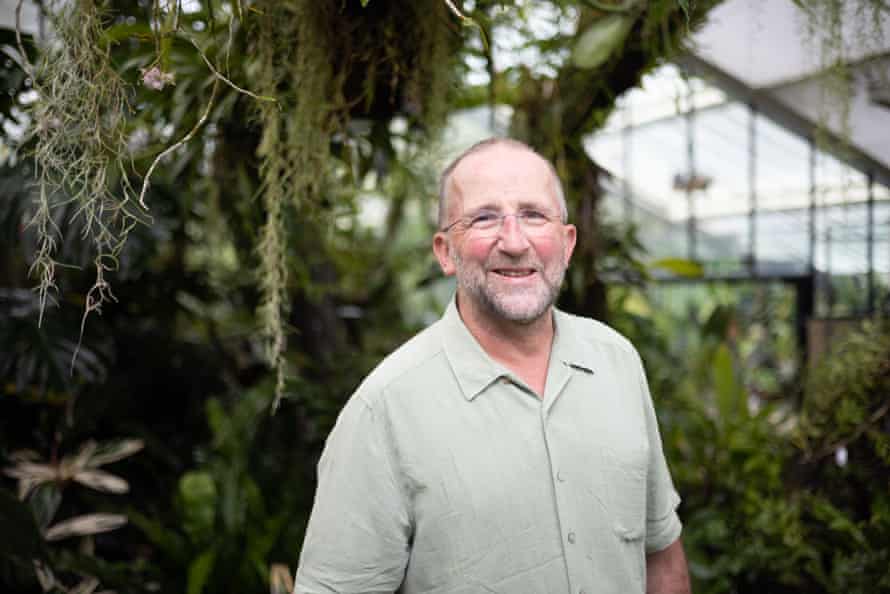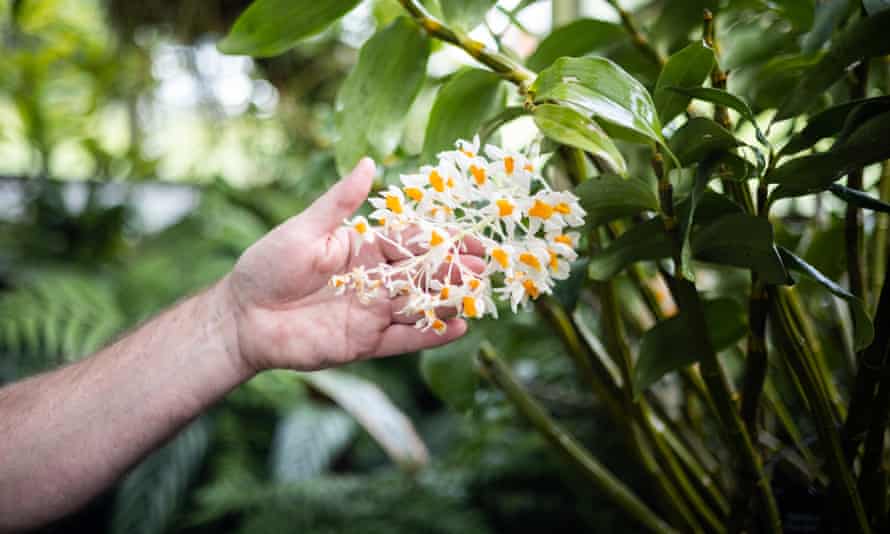John Deer runs a peculiar operation. As Kew Gardens’ security manager it is his job to protect the 1.8 million people that visit every year. It is also his job to make sure plants and cuttings do not vanish from the botanical collection while the public are on the royal estate. To do so, members of one of the UK’s oldest constabularies patrol the grounds and officers keep watch from a state-of-the-art control room.
“We’ve had people climb over the perimeter walls to access the gardens. It’s why we have 24-hour security,” Deer says, noting that there is still the occasional breach. “But the orchids, I would say, are more protected.”

Orchids from all over the world are studied at Kew and many need special protection. Ivory and rhino horn dominate the popular perception of wildlife crime, but the colonial-era enthusiasm of wealthy Victorians for orchids, known as “orchidelirium”, has taken on a new form today, with social media the focus of a thriving illicit global market that threatens the survival of some species. “Orchid influencers”, complete with live streams and “unboxing videos”, are at the heart of the modern obsession.
Security staff at Kew gardens no longer carry handcuffs and truncheons, or wear a police uniform, but just like the Crimean war pensioners who stood guard at the gardens in the 19th century, Deer’s team needs to be on the lookout.
Orchid thieves can strike at any time. Earlier this month, green-winged orchids were stolen from a meadow near Rugby (Warwickshire police are investigating). Across the Atlantic in the Cayman Islands, two chocolate orchids were stolen from Queen Elizabeth II Botanic Park in May. They had been recovering from the theft of a cutting the year before.
“The particularly rare orchids [at Kew] are locked away behind glass cabinets so people can’t get them,” says Deer, explaining that some of the rarest and most endangered are kept out of sight from visitors entirely. “We’re trying to protect the species. Often, the best growing conditions are back of house. With that, we have to make sure that they also have the right security.”
Orchids are one of the largest and most diverse flowering plant families: there are roughly 28,000 species known to science and they account for about 8% of all flowering plants. They are found on every continent except Antarctica, and survive at high altitudes and in tropical and semi-desert conditions.
Earlier, I had toured the Princess of Wales conservatory with Mike Fay, senior research leader for conservation genetics at Kew. He also co-chairs the International Union for Conservation of Nature’s orchid specialist group, a global network of experts working towards their protection.

Inside the glasshouse, each room transports you to a different ecosystem, with the humidity, temperature and ventilation calibrated to sustain the plants. As Fay wipes the condensation from his glasses, we inspect the orchids. Some are delicate epiphytes: orchids that hang from specially constructed fake trees, absorbing moisture and nutrients from the air, displaying bright colourful flowers. Others are the size of shrubs, producing a handful of large flowers that last only a day.
Fay delights in the variety of orchids, detailing the complicated relationship between the plants and the insects, bats and hummingbirds that pollinate them, as well as the fungi that orchids rely on to successfully reproduce. Many “trick” pollinators by impersonating other flowers or releasing pheromone scents of female insects to get unsuspecting males to fertilise them. As well as being prized for their beauty, some orchids are considered a delicacy: vanilla is an orchid, as is one used in salep, a popular drink in Turkey.
So what is it about orchids that people love so much? “I think it is a sort of kinkiness,” Fay says. “They don’t have a normal lifestyle. They indulge in strange pollination, they have to have a relationship with a fungus for the seeds to even germinate, they have weird and wonderful flowers that are incredibly variable. Some are difficult to keep going, so it’s a way of showing you are a good horticulturist.”

Although rumours of single wild orchids selling for many thousands of pounds are common, the true scale of the illegal trade is unknown. Experts say they cannot make a well-informed guess due to the lack of reliable information but point to a thriving legal trade. More than 1.1bn live orchid plants were legally traded internationally from 1996-2015, according to a 2018 review paper. The EU exported or re-exported about EUR200m (#170m) worth of orchids and cacti in 2018, according to the UN.
It is illegal to trade wild orchids internationally without a permit from the Convention on International Trade in Endangered Species of Wild Fauna and Flora (Cites) and for some, dealing in wild-collected specimens is completely forbidden. Despite this, trafficking of orchids is rampant, with many flowers sold openly on social media around the world. In some cases, new orchid species are being harvested by traffickers even before they are known to science.
“There is a lot of illegal international trade in orchids,” Fay says. “If a new species is described, often the exact location is made a bit blurry. There are documented cases of new slipper orchids having been discovered in south-east Asia in recent years. And, before they’ve even been officially described, populations have been stripped from nature and it is effectively extinct in the wild.”
In the UK, the lady’s slipper orchid nearly met a similar fate. It was declared extinct in England in 1917 after Victorian orchid and dried flower collectors pushed it to the brink. But in 1930, it was rediscovered by chance and today is the focus of intense reintroduction efforts led by Natural England, its wild site a closely guarded secret.
“One of the things Kew has been involved with for 30 years is developing a propagation programme. We organised for the flowers of the native lady’s slipper to be pollinated by hand. We produced seeds and those are germinated at Kew. We now have more than a dozen reintroduction sites,” says Fay.

“That does have some risks. You still get some who want to go in there, pull them out and dig them up.
“It’s a question of having more plants in your reserves that you don’t tell people about,” he adds.
As our tour of the conservatory comes to an end, Fay implores me not to repeat the myth that a police officer sleeps out in a tent guarding the lady’s slipper while it is in flower, no matter how much I wish it were true. But a warden does look out for the flower, and there is no sign of that caution ending soon.
Find more age of extinction coverage here, and follow biodiversity reporters Phoebe Weston and Patrick Greenfield on Twitter for all the latest news and features